From Dhansak to Agiarys: Unravelling Odisha’s Parsis
From Dhansak to Agiarys: Unravelling Odisha’s Parsis
The Parsi community's culture remains largely unfamiliar to many Indians. Our exposure to Parsis is often limited to the stereotypical portrayals in Bollywood, where characters like Pappa, portrayed by actor Bomie E. Dotiwala in the cult favourite film ‘Munna Bhai M.B.B.S’, Nari Contractor, played by Govardhan Asrani in the comedy film ‘Dhamaal’ and his iconic vintage car have become synonymous with the community. These representations, though entertaining, barely scratch the surface of the rich and vibrant culture that the Parsis embody. Often recognized by their distinct accent and famous bakery shops, Parsis hold a treasure trove of traditions, history, and contributions that remain unexplored by the mainstream.

History of Parsis
The history of the Parsis traces back to ancient Persia, modern-day Iran. The term "Parsi" is derived from the Persian word "Pars," which means Persia. The ancestral roots of Parsis lies in the ancient Zoroastrian religion, founded by the prophet Zarathustra around the 6th or 7th century BCE. Zoroastrianism, one of the world's oldest known religions, espouses a monotheistic belief in Ahura Mazda, the wise lord, who represents the supreme divine authority. The Parsis arrived in India around the 8th century CE, seeking refuge from religious persecution in their homeland. The first wave of immigrants are said to have landed in Sanjan, Gujarat, under the leadership of a Zoroastrian priest named Dastur (High Priest) Daad Behram. The local king, Jadi Rana, allowed them to settle but imposed a condition: the Parsis had to adopt the local language, customs, and dress. The Parsis readily integrated into Indian society while still preserving their Zoroastrian identity. Over time, they contributed immensely to the social, and economic fabric of their new homeland. They engaged in trade, shipbuilding, and philanthropy, leaving an indelible mark on Indian history. One of the most well-known contributions of the Parsis to India is the establishment of Tata Group, a conglomerate that played a crucial role in the country's industrial development. Prominent Parsi families like the Tatas, Godrejs, and Wadias have become household names in the Indian business landscape.
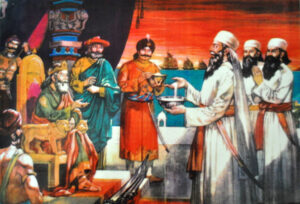
Parsis in Odisha
In the culturally diverse city of Cuttack, the lone Parsi family thrives. With just two known Parsi families residing in the entire state, there is scant information available about the community. My City Links discovered the only Parsi family in Cuttack, residing in the quaint neighbourhood of Tulsipur. Through an exclusive interview with Xerxes Irani, MCL delves into the family's roots, their journey to Cuttack, and the profound impact they've had on the local community. Xerxes’ lives with his father, Diniar Parvez Irani, mother, Gayatri Devi Irani, sister Dilnawaaz Irani, wife Trishara Irani, and their adorable son, Zorvan Irani.
As Navroz beckons, MCL takes on the responsibility of sharing the lesser-known story of this resilient community through this interview. Below are the excerpts.
How long has your family been living in Cuttack?
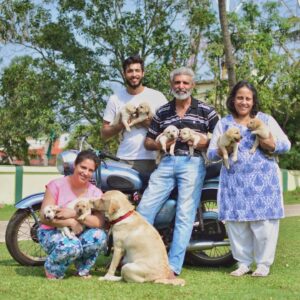
Cuttack is my mother’s hometown. My parents first met during a basketball tournament which was being hosted here and they fell in love and got married.My father became a coach with sports authority of India and was posted here in the year 1986. Shortly after, my sister and I were born and we have been settled here ever since. So it's been almost four decades since my family has settled here.
How did your family come to live here? Where are you originally from?
My grandfather migrated from Iran and first settled in Secunderabad where he started the very famous Irani chai cafes. He had eight children with my grandmother. My father, being a professional basketball player, was working with the Tata group based in Jamshedpur. He had come down to Cuttack during the national games when he met my mother who was then playing for the Odisha womens team. They fell in love and got married. They lived in Jamshedpur for a couple of years before shifting to Cuttack where my father got posted as a coach. My sister and I were born and we spent most of our lives here in Cuttack. My father is Irani-Parsi and my mother is Odia-Punjabi. So I guess we are the only Irani-Parsi -Odia-Punjabi children to have ever been born. I now have a son, who is the third generation Zoroastrian residing here.
Is there a Parsi Temple here? If not, how do you offer your prayers?
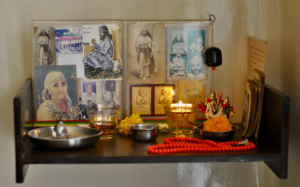
There is no Parsi Agiary, a.k.a. Fire temple in Cuttack. Me and my family are very progressive and spiritual. We believe that we can communicate with the creator by
simply reaching within. We do have a puja room in the house which has photos, miniature idols and books of almost all religions where we offer our prayers every once in a while.
How do you and your family celebrate Navroz?

We call all our fellow Zoroastrian friends and family members in the morning to wish them. Then my mother goes on to make the best mutton Dhansak in the world which we enjoy for two days straight.
What are some other unique festivals?
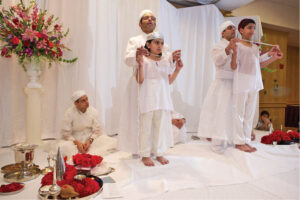
I fondly remember the grand celebrations during our Navjot ceremony. As children, me and my sister went to Secunderabad where my paternal family had organised our Navjot ceremony which is a thread ceremony conducted by parsi priests in the presence of all our friends and family members. An official induction into the Zoroastrian religion. It was then when we first learnt our prayers which are in Persian language. Many rituals were conducted followed by a huge feast. It was a very memorable day.
What are the drawbacks of not having a community here in Odisha?
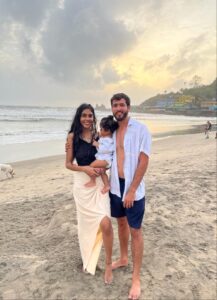
There are no set drawbacks as such. But yes, it would have been nice to have more fellow parsis in our hometown. People here in Cuttack are very friendly and inclusive. All my best friends and family friends are here and we’ve never felt like outsiders. As a matter of fact we feel even more so special given the uniqueness of our roots.
What profession is your family into?
My family is composed of sports people. My father is a retired basketball coach, mother is a housewife and sister is an international banker. I have over a decade of work experience in various fields and am currently working as a freelance artist, fitness coach and have taken up a couple of entrepreneurial projects of my own. I have a beautiful wife named Trishara and a son named Zorvan who recently turned a year old. My grandparents recently shifted from the US and are now living with us.
We have heard that Parsi funerals involve exposing the body of the dead to the sun and leaving it there, is that being practised here in Cuttack? If not, what are your funerals like?
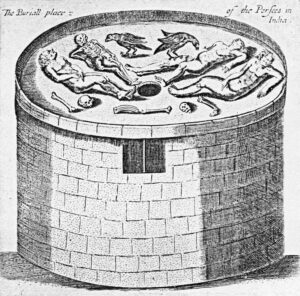
Well, the Zoroastrian faith is one of the oldest in the world yet very scientific. We are born from the elements of nature and each individual has a unique soul. Now, after the soul has left the physical plane, we believe that the body should go back to nature through the natural process of decomposition. So the dead body is taken to the nearest burial place called the ‘tower of silence’ which is a circular, raised structure built by Zoroastrians for excarnation where it is exposed to the sun, in order to avert contamination of the soil and other natural elements by the dead bodies. Here carrion birds, usually vultures and other scavengers, consume the flesh. The skeletal remains are gathered into a central pit where further weathering and continued breakdown occurs. So basically it is the process where the elements of nature slowly break down the body with the least amount of contamination and pollution caused to the environment.
Since there is no tower of silence in Odisha, one would have to travel to the nearest functioning tower of silence in India.
What rituals are followed during a Parsi wedding?

My sister and her husband recently got married, and I had the privilege of witnessing all the beautiful rituals. From the engagement ring ceremony, 'Rupia Peravanu,' to the planting of saplings in a 'Madhavsaro' ritual symbolising fertility, it was a joyous affair. The groom's family visited the bride's house for 'Devo Adarni,' exchanging gifts and treats. Before the marriage commenced, there were the 'Supra na Murat' and 'Nahan' ceremonies for purification. The wedding rituals included the 'Achu Michu' to ward off evil vibes. It is followed by 'Ara Antar,' where the couple showered rice at each other to determine who would rule the household. The Parsi priest chanted prayers in Persian throughout. The wedding concluded with the couple exchanging rings in a ritual called 'Chero Bandhavan'. Later, everyone showered rice on them to bless the couple. Post-wedding, there was 'Hath Borvanu,' where the bride's sister helped clean the groom's hands and playfully untied the couple, receiving a gift in return. The fun continued with 'Pag Dhovanu,' where the sister-in-law threatened to spill milk on the groom's shoes playfully. A visit to the Fire temple followed, seeking almighty's blessings. The grand wedding reception included a 'first dance' by the couple and lively music and dance throughout the night. The feast featured delectable Parsi dishes like Sali-na-gosht, Patra-ni-machhi, Pulao-dal, Alima-murgh, and the famous Lagan-nu-custard, served exclusively at Parsi weddings. It was a night filled with joy, love, and celebration.
What are some rare things about Parsis that one should know about?
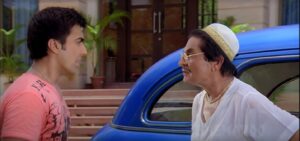
Well apart from being very fun loving , sporty and jovial us Parsis are very competitive, entrepreneurial and enterprising. Parsis are very old school at heart and we like to enjoy the finer things in life. We love our old cars and motorcycles, rustic furniture, gardening, old grandma recipes, stuff like that. Our community is one of the wealthiest and literate in the world. It is a very progressive community yet there is a certain degree of rigidity when it comes to inclusiveness. I hope that changes soon.
Do you feel out of place here, irrespective of having friends?
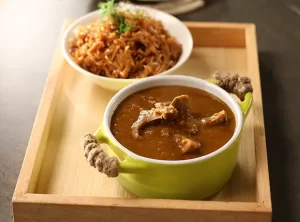
Not really. As a matter of fact I feel even more special. When people first see me and hear my name they automatically presume I’m a foreigner but as soon as I speak in Odia, people get a bit of a shock. ‘Bhai. Tame Odia kahiparucha?’ And my reply is usually ‘Han Bhai. Mu khanti Odia’.
As a Parsi living amongst people who know little to nothing of your faith, what do you think are your areas of concern, or what are the things that you’d like to change or alter about the situation?
To be honest, people who meet me are very inquisitive to know about our faith. Some people automatically presume I'm a Muslim, some think I’m Jain. People have very little knowledge about our religion and community, so I take the trouble of explaining to people about our ways of worship and end up using references such as the Tatas, Wadias, Godrej, Dadabhai Naroji, Sam Manekshaw, and others, just to give context. The Parsi community, although very small , throughout history has had a huge impact given its contributions to the nation in various fields which I feel should be highlighted more for people to acknowledge and recognise. A little bit more awareness can go a long way.
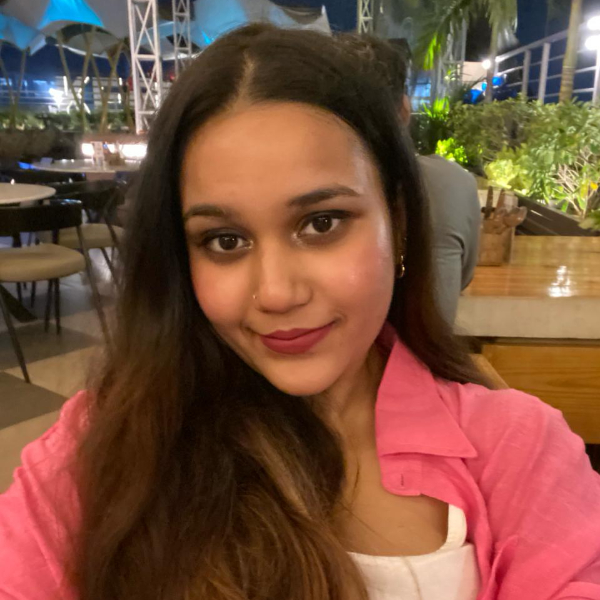



 copy.jpg)